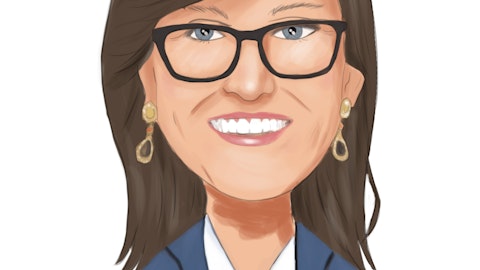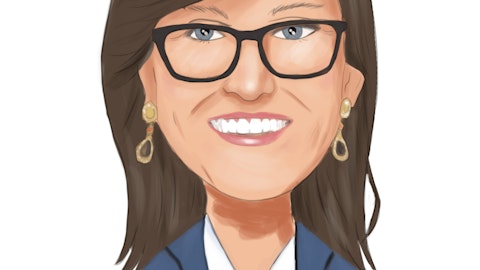Aaron Tachibana: Hi, Mark, this is Aaron. So yes, so Moderna did start enrolling patients in the Phase 3 trial in the second half, like was planned. Things did get pushed to the right a little bit. And so the enrollment has been slower than what we originally thought. So although we’re recognizing some revenue here in the fourth quarter, it’s smaller than what we originally thought. So it’s our expectation now at this point in time that the ramp should start here in 2024 and then into 2025, right? So the next two years could be quite lucrative for Personalis in terms of revenue ramp from the Phase 3 work with Moderna.
Mark Massaro: Okay. That’s it for me. Thank you.
Aaron Tachibana: Thanks, Mark.
Operator: [Operator Instructions] Our next question here will come from Swayampakula Ramakanth with H.C. Wainwright. Please go ahead.
Swayampakula Ramakanth: Thank you. Thanks for taking my questions. I just want to understand a little bit more about what you’re doing in terms of partnerships for commercialization. So you said that’s one of your pillars for growth. Can you expand on that?
Chris Hall: Yes, sure. So I think, we think that, so we offer, and we have a test that we believe is the most sensitive MRD test. We think that product is unique and differentiated. And, you know, my own experience in commercializing these products with partners is that when you have a set of relationships with oncologists or other physicians as a sales group, having a new cutting edge product that you can bring in and walk in and talk to is actually something that distinguishes you and makes you more valuable. And that’s good. And so, we’re seeking partnerships that can help to augment the partners set of products to help them grow and build their talk tracks inside customers and deepen their relationships and broaden their offering.
At the same point in time for us, you know, while we know how to do this and we know how to build these products, it’s expensive to do it by ourselves. And we’ll never in a relationship where we turn it over to somebody else, but being able to commercialize side by side would allow us to move a lot faster with a lot less investment and a lot less fundraising needed. And so one of the things we’ve been very focused on is how do we become ever more efficient, ever more focused on the mission at hand here, which is to capture a decent part of this $20 billion market. And part of that is having a partner to allow us to move faster. Because that will either mean that we’ll have less investment capital needed to be able to dramatically scale the company’s revenue, or it’ll free up more capital to invest right back into the clinical study evidence development.
Neither one of those two scenarios is good for shareholders. So that’s what we’re focused on.
Swayampakula Ramakanth: Okay, thank you. Thanks for taking the question.
Chris Hall: Sure.
Operator: And our next question will come from Mike Matson with Needham. Please go ahead.
Unidentified Analyst: Hi, guys. This is Joseph on for Mike. Hopefully this wasn’t addressed already, but I’m looking through transcripts right now. I’m not seeing it. So I was just wondering if maybe you could talk about your expectations for cash burn as we start to move into 2024. I guess, is the strategy kind of similar to what was being done in 2023? I don’t know if you guys still have much more wood to chop there. But as you’re nearing some of these commercial milestones, we expect that to change pretty materially?
Aaron Tachibana: Hi, Jason. This is Aaron. So in terms of the cash burn, cash runway question that you asked. So we ended the quarter into Q3 with close to $121 million of cash. And we said, has basically two years of runway. In 2023, our cash usage is going to be below $70 million. So looking into 2024, our expectation at this point in time and our estimates are for cash usage to be less than 2023 next year. Okay. And so, as we go forward, and that’s going to – there’s going to be a multitude of different things that contribute to reducing the cash usage. A, some revenue growth. B, gross margin expansion. We have a lot of initiatives to improve gross margin. In addition, controlling our OpEx, similar to what we’ve done this year. We reduced OpEx, some $10 million excluding the impairment charge that you just saw. And we’re going to continue to be prudent as we go into 2024.


